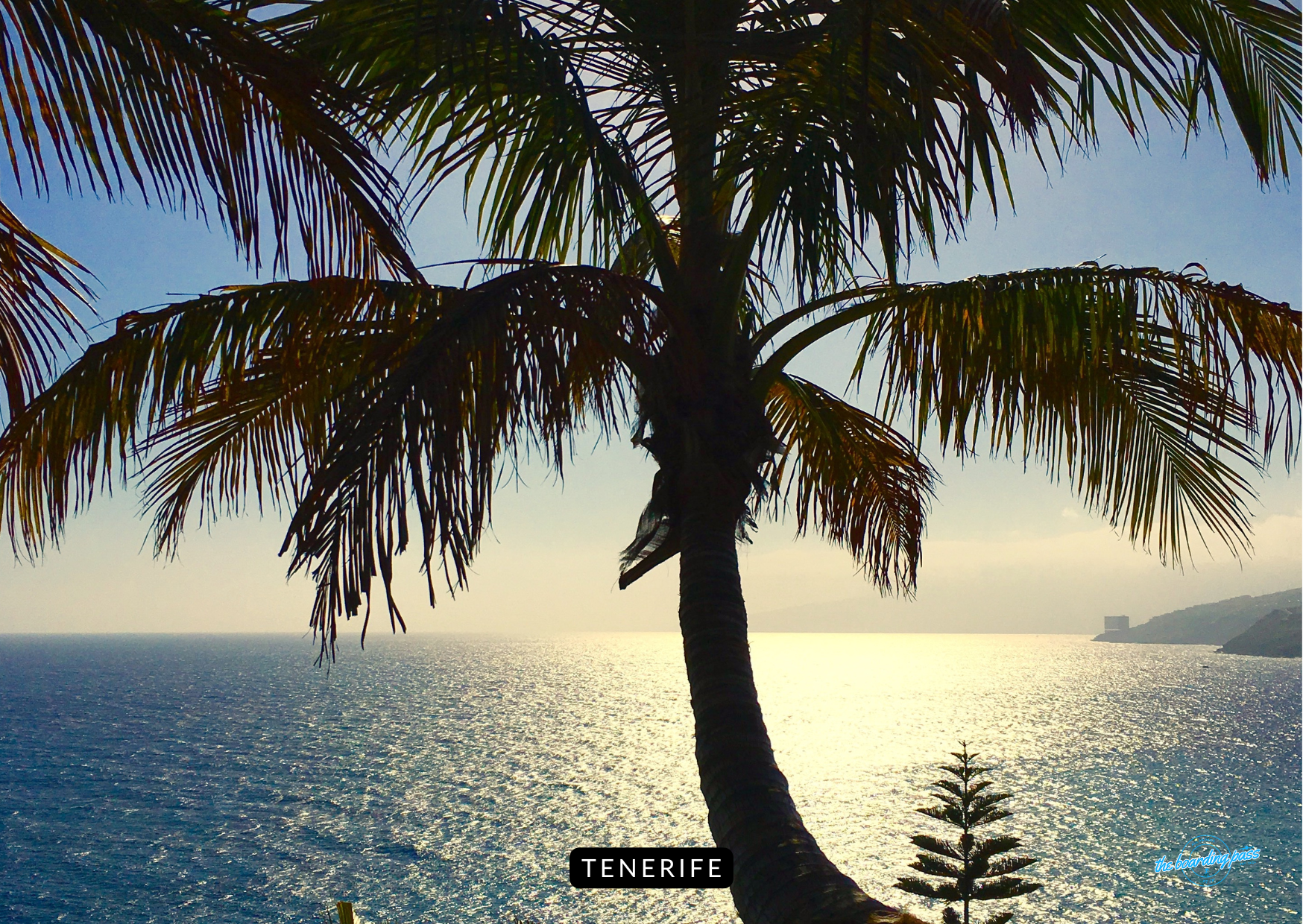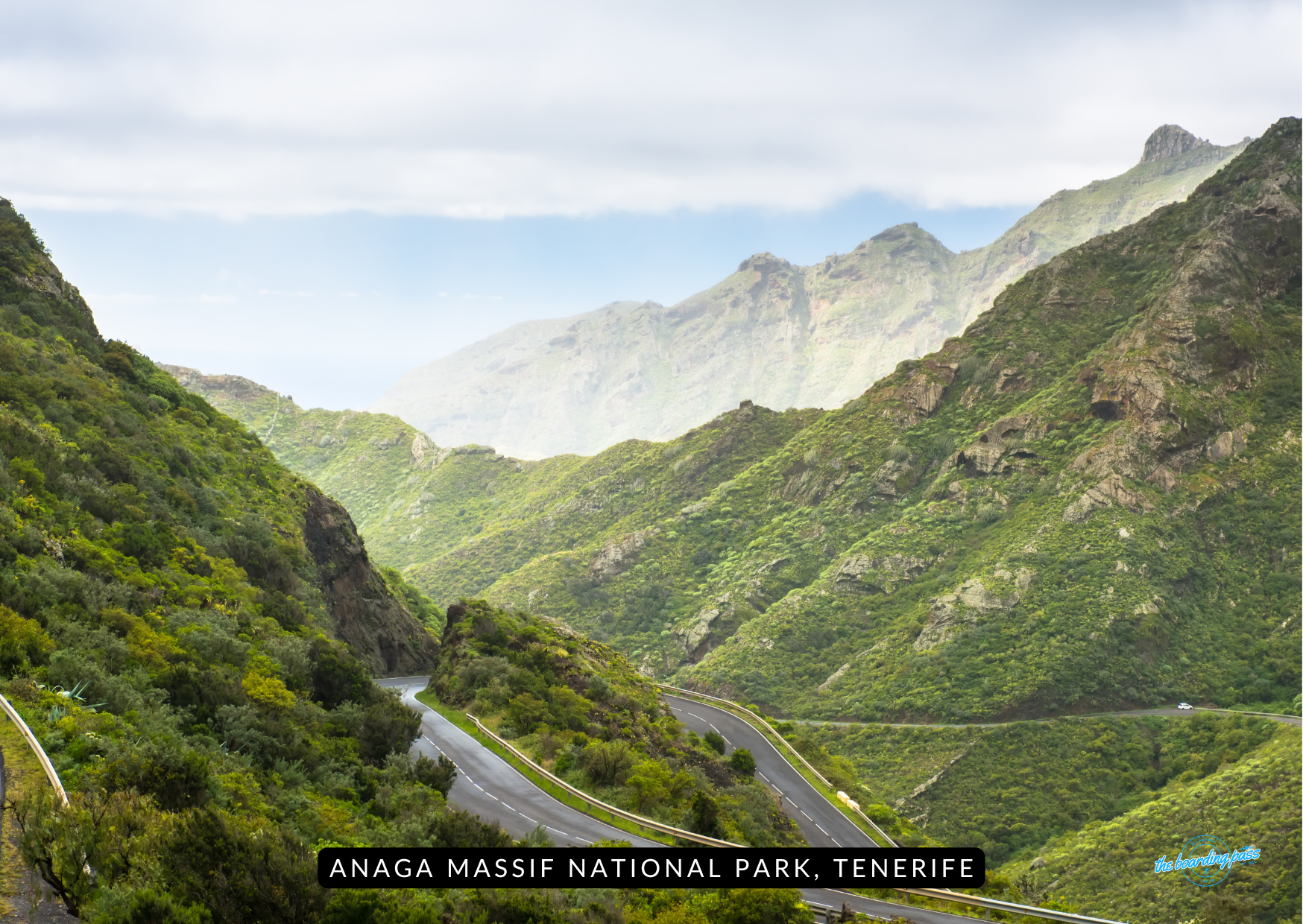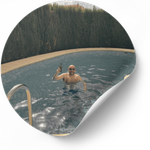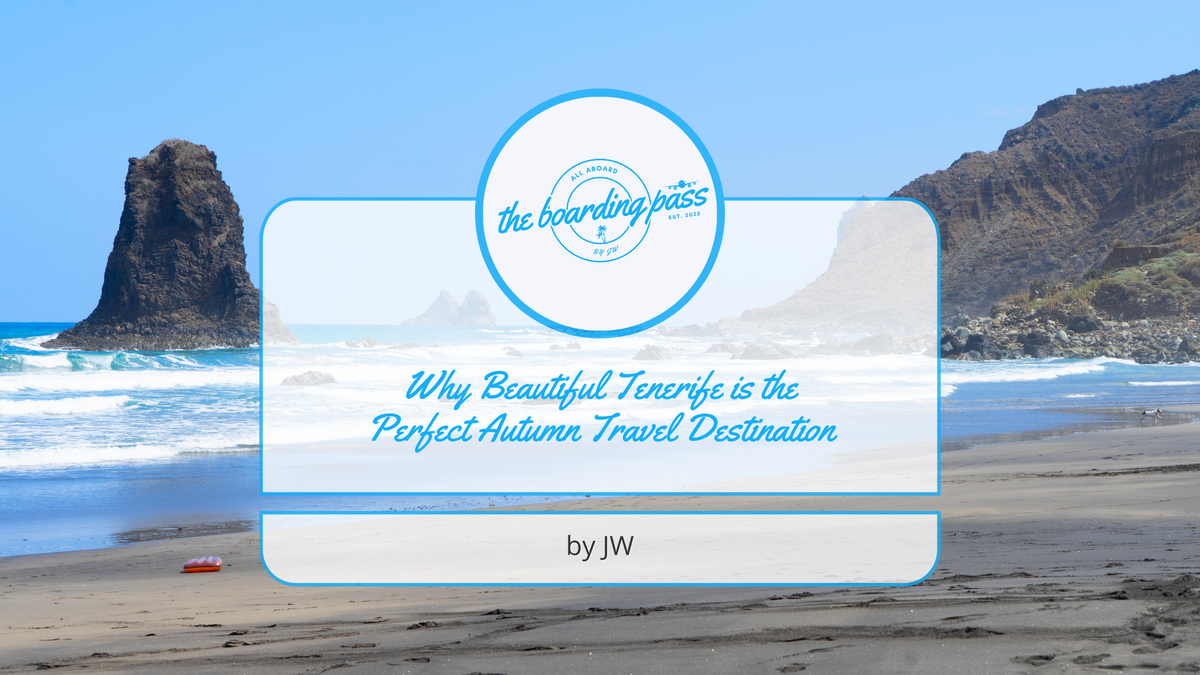Sunshine, Volcano Views and Endless Summer Vibes
Welcome back to The Boarding Pass Travel Blog. As the British summer fades and the skies turn that unmistakable shade of grey, thoughts drift to where the sun still shines. The Caribbean and Indian Ocean might be calling, but I've decided to visit somewhere closer to home. It’s Tenerife, the largest of Spain’s Canary Islands. It's place that for many truly delivers the goods.
This sun-kissed island sits just off the northwest coast of Africa, yet it feels undeniably Spanish. From the volcanic drama of Mount Teide to the golden beaches of Costa Adeje and the quiet charm of La Orotava, Tenerife offers a blend of culture, comfort, and colour that’s hard to beat.
This is my second time exploring the Canaries,the first being back in 1999, when I visited Gran Canaria. I didn't enjoy that particular trip, but I am super excited about the next Canary Islands Adventure.
Geographic Overview of Tenerife

Tenerife stands as the largest island in the Canary Islands with a land area of 2,034.38 km² (785.48 square miles). The island measures approximately 300 kilometers from the African coast and roughly 1,000 kilometers from the Iberian Peninsula. With its 342-kilometer coastline, Tenerife offers nearly 250 miles of coastal territory and 43 miles of beaches.
The island's dramatic topography is dominated by Mount Teide, which at 3,715 meters (12,188 feet) represents the highest point in Spain and the highest peak in the Atlantic islands. When measured from the ocean floor, Teide reaches 7,500 meters (24,600 feet), making it the third-highest volcano in the world, surpassed only by Mauna Loa and Mauna Kea in Hawaii.
Population and Administrative Structure
As of July 2025, Tenerife has a population of 967,575 inhabitants, making it the most populous island in Spain and the Macaronesia region. The island houses 42.7% of the total Canary Islands population. The capital city, Santa Cruz de Tenerife, serves as the seat of the island council and shares co-capital status of the Canary Islands with Las Palmas de Gran Canaria.
The metropolitan area formed by Santa Cruz de Tenerife and San Cristóbal de La Laguna creates the second-largest urban area in the Canary Islands, with a combined population exceeding 382,000 inhabitants. Notably, the island has experienced significant demographic growth, particularly in the southern municipalities, which gained 110,560 residents over the past 20 years.
Volcanic Origins and Geology
Tenerife's geological formation spans approximately 12 million years, created through successive volcanic eruptions. The island formed through the fusion of three separate volcanic massifs: Anaga, Teno, and Valle de San Lorenzo, unified by volcanic activity from Teide approximately three million years ago.
The modern Teide volcano began forming 170,000 years ago following a catastrophic landslide that created Las Cañadas caldera. The most recent eruption occurred in 1909 from the El Chinyero vent, though historically, four recorded volcanic eruptions have shaped the island, including the devastating 1706 eruption that buried the city and port of Garachico.
Climate and Weather Patterns
Tenerife enjoys a subtropical climate with remarkable consistency throughout the year. Average temperatures range from 21°C (70°F) in winter to 28-29°C (82-84°F) in summer. The island experiences over 3,000 hours of sunshine annually and maintains an average daily temperature of 24.8°C (75°F).
The island's varied topography creates distinct microclimates: the northern regions receive more moisture from Atlantic winds and remain lush and green, while the southern areas around tourist resorts like Playa de las Américas experience more arid conditions. This climatic diversity allows for year-round tourism, with sea temperatures ranging from 19°C in winter to 24°C in summer.
Tourism and Economic Significance
Tourism represents Tenerife's primary economic driver, with the island receiving 7,384,707 visitors in 2024. This makes Tenerife by far the most visited island in the Canary archipelago and one of the world's most important tourist destinations. The island's tourism infrastructure includes two airports (Tenerife North and Tenerife South), two international cruise ports, and modern transportation systems.
The tourism industry has driven significant development, particularly in the southern region, which has experienced dramatic population growth as a result of foreign investment and worker migration.
Cultural Heritage and Etymology
The name "Tenerife" derives from the indigenous Guanche language, with "Tene" meaning "mountain" and "Ife" meaning "white," referencing the snow-capped Mount Teide. The Guanches, believed to be descendants of Berber tribes from North Africa, were the island's original inhabitants before Spanish colonisation in the early 15th century.
Tenerife hosts the Carnival of Santa Cruz de Tenerife, one of the world's largest and most significant carnival celebrations. The island is also home to two UNESCO World Heritage Sites: San Cristóbal de La Laguna, recognized for its colonial architecture and urban planning that influenced Latin American cities, and Teide National Park.
Tenerife is loaded with Natural Biodiversity

Despite its modest size, Tenerife demonstrates exceptional biodiversity with over 1,400 plant species, including 200 endemic to the Canary Islands and 140 exclusive to Tenerife. The island supports approximately 400 fish species, 56 bird types, and several thousand invertebrate species.
The Anaga Massif has been designated a UNESCO Biosphere Reserve since 2015, recognised as the natural area with the greatest number of endemic species in Europe. Teide National Park, covering 18,900 hectares, serves as Spain's most visited national park and the eighth most visited globally, attracting over 4 million visitors annually.
Educational and Scientific Importance
Tenerife houses the University of La Laguna, founded in 1792 as the oldest university in the Canary Islands. The island also hosts the Teide Observatory, a major international astronomical facility located on the volcano's slopes, taking advantage of the exceptional atmospheric conditions above the temperature inversion layer.
The combination of Tenerife's strategic Atlantic location, diverse microclimates, volcanic landscapes, rich cultural heritage, and modern infrastructure establishes it as a unique destination that seamlessly blends natural wonder with contemporary amenities, making it a compelling choice for both scientific study and leisure exploration.
The Climate in Tenerife Provides an Endless Summer All Year Round
Autumn in Tenerife is more like a gentle continuation of summer.
Average temperatures: between 22°C and 28°C from September through November.
The sea remains perfectly swimmable, hovering around 23°C.
Evenings are mild, making perfect for sipping sangria (or a beer or two) at a seaside bar without reaching for a jumper.
It’s that rare kind of place where packing sunscreen in October feels not just acceptable but essential.
Getting To Tenerife From London, Madrid, Berlin and JFK
From London: Frequent direct flights from Heathrow, Gatwick, Luton and Stansted take around 4 hours 30 minutes. Carriers include British Airways, easyJet, Ryanair, and Jet2. This time around, The Boarding Pass crew will be boarding an Easy Jet Flight
From Madrid: Domestic flights operate daily with Iberia, Air Europa and Ryanair, only 2 hours 50 minutes away.
From Berlin: A slightly longer hop at 5 hours 10 minutes, with options via Eurowings, Ryanair and easyJet.
From JFK, New York: No direct flights (yet), but connecting via Madrid or London gets you there in under 11 hours total, worth every minute once you feel that Atlantic breeze.
Where to Stay in Tenerife
From Beachfront Bliss to Rock Star Nights, one of the joys of visiting Tenerife is the sheer variety of places to stay. Whether you’re chasing sea views, volcanic landscapes or a slice of nightlife, there’s something here for every traveller and every budget.
For this trip, we’ve gone for a bit of fun, booking a week at the Hard Rock Hotel Tenerife. Think poolside cocktails, live music, and a laid-back luxury vibe that makes you feel like you’ve just stepped into your own music video. It’s bold, stylish, and perfectly positioned for those golden island sunsets.
If you’re planning your own trip, hop onto Kayak or Booking.com to scout out the best deals. Both platforms are great for comparing prices across hotels, villas, and resorts. And before you hit “book now,” take a peek at TripAdvisor, the reviews there can be a goldmine for insider tips and honest traveller insights.
Whether you stay in a beachside resort, a boutique hideaway or a mountain retreat, Tenerife’s warmth extends well beyond its weather.
Why Autumn is the Best Time to Visit Tenerife
The summer crowds have thinned, the prices dip, and the weather stays glorious. You’ll find plenty of space on the beaches, shorter queues for restaurants, and a calm rhythm that feels like the island’s natural heartbeat.
Whether you’re diving off the coast of Los Cristianos, hiking around Teide National Park, or simply lazing with a cocktail in hand, I think Tenerife in autumn will be pure joy, a reminder that sunshine doesn’t have to come with long-haul flights or jet lag.
✈️ Sign up to The Boarding Pass Travel Blog and stay tuned for tales from Tenerife, sunshine, sangria and a few surprises guaranteed.

